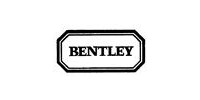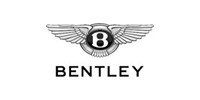March 16, 2021
Facts
Bentley 1962 issued proceedings for trade mark infringement against the famous manufacturer of luxury cars Bentley Motors Ltd in relation to its use of the sign BENTLEY in relation to clothing and headgear.
Bentley 1962 has been selling clothing and headgear under the BENTLEY brand since 1962. It is the owner of three UK registered trade marks: (i) a word mark for BENTLEY in Class 25 covering “Clothing and headgear”, registered in December 2008; (ii) a figurative device featuring the word BENTLEY in Class 25 covering “knitted clothing; shirts and waistcoats”, registered in August 1982; and (iii) a series mark of the same figurative device featuring the word BENTLEY in Class 25 covering a wide variety of clothing and headgear goods, including “hats, caps, scarves, gloves”, registered in September 1998. The device is as follows:

Bentley Motors began selling clothing and headgear in 1987 under the following sign:

A Bentley Motors catalogue of that date included a section headed “The Bentley Selection”, which advertised an anorak, two silk ties, a lightweight jacket and a cashmere scarf. The goods only had the famous Bentley “wings” sign (the “B-in-wings” device) affixed to them, but each page of the catalogue was emblazoned with the words “The Bentley Selection”.
At first instance, His Honour Judge Hacon had found that Bentley Motors had infringed Bentley 1962 Ltd’s marks under s 10(1) of the Trade Marks Act 1994. He had also found that Bentley Motors could not rely on a defence of honest concurrent use because the evidence showed that it had invoked a policy that would have had the intended effect of increasingly appropriating the goodwill associated with the BENTLEY mark in the clothing business.
As for sales pre-1994, the only mark registered at that time was Bentley 1962’s device mark for “knitted clothing, shirts and waistcoats”. Given that none of Bentley Motors’ goods were covered by this registration and, under the 1938 Act, a trade mark owner could not sue for infringement in relation to goods or services for which the mark was not registered, HHJ Hacon had found no infringement by Bentley Motors before October 1994. Further, under the transitional provisions of the 1994 Act, Bentley Motors had a right to continue to sell those garments by advertising them under the BENTLEY sign, but not by using the sign on the goods themselves.
Bentley Motors appealed the finding of infringement, but was not given permission to appeal the finding on honest concurrent use.
Decision
Infringement
Giving the lead judgment in the appeal, Lord Justice Arnold agreed with HHJ Hacon that the Bentley Motors’ sign was made up of two distinct signs, the “B-in-Wings” device, and the word BENTLEY used simultaneously (the Combination Sign).
As for infringement, Bentley Motors argued that HHJ Hacon should have considered whether use of the Combination Sign affected, or was liable to affect, one of the functions of the BENTLEY trade mark. It said that HHJ Hacon should have found that this was not the case and that therefore there was no infringement under s 10(1).
Arnold LJ found that HHJ Hacon had actually addressed the issue when he stated that a trade mark is only infringed if use of the sign is liable to affect the functions of the mark and that, according to CJEU case law, if there has been honest concurrent use then such use would not be liable to have an adverse effect on the origin function of the trade mark. This was, Arnold LJ said, an entirely accurate statement.
Arnold LJ noted that the only case put forward by Bentley Motors as to why the Combination Sign did not affect the functions of the BENTLEY mark was that it had a defence of honest concurrent use. This had been rejected by the judge and Bentley Motors had been refused permission to appeal it. Therefore it was not open to Bentley Motors to contend that the judge should have concluded that the issue of affecting trade mark function was not satisfied for some other reason.
Transitional provisions
Bentley Motors’ argued that the judge was wrong to hold that its defence under the transitional provisions was restricted and that he ought to have held that it extended to: (i) a wider range of clothing; and (ii) any use of the word BENTLEY in relation to such goods.
Arnold LJ noted that the transitional provisions of the 1994 Act implemented Article 5(4) of the Trade Mark Directive (89/104/EEC) (as subsequently amended). Article 5(4) protects “the continued use of the sign”. In this case, there were two dimensions of use to consider: (i) use in relation to what goods or services; and (ii) use in what manner.
HHJ Hacon had held that Bentley Motors could continue to use the sign in relation to “jackets, silk ties, caps and scarves” generally, and not merely the specific kinds of jackets, silk ties, caps and scarves that Bentley Motors had sold before 31 October 1994. Bentley Motors said that he should have assessed the goods at a higher level of generality. It argued that it was entitled to continue to use the sign in relation to “all the clothing types complained of (save for knitted clothing, shirts and waistcoats)”. The problem with this formulation was that it was result-oriented, Arnold LJ said. Why should Bentley Motors be entitled to continue to use the sign in relation to a particular kind of clothing just because, many years later, its use of the sign in relation to that kind of clothing had been held to be an infringement subject to the defence under the transitional provisions?
The substance of the argument was that, given that Bentley Motors had sold “clothing of various kinds as merchandise of its car marque” before 31 October 1994, it should be entitled to continue to sell “clothing that serves the same purpose” after that date.
Arnold LJ rejected this argument, finding that: (i) agreeing that Bentley Motors had a legitimate expectation of being able to sell any clothing that served the same purpose would be giving it carte blanche to change the clothing it sold according to changes in business models, and would defeat the legitimate expectations of the trade mark owner whose rights had been enlarged by the 1994 Act; (ii) the test was unacceptably vague and uncertain; and (iii) it was difficult to reconcile with Bentley Motors’ acceptance that it could not use the sign in relation to knitted clothing, shirts and waistcoats; for example, T-shirts were in 1994 and remain a common form of merchandise.
As for the manner of use, the judge had not held that Bentley Motors was only entitled to use the sign BENTLEY in the precise manner it had done before 31 October 1994, but that it was entitled to use the sign on “promotional literature” generally.
Bentley Motors said that the defence should be extended to any use of the sign in relation to the specified goods. Again, it said that it had a legitimate expectation of being able to use the sign in any way that amounted to use in relation to the relevant goods. Arnold LJ disagreed. Before 31 October 1994, Bentley Motors had sold articles of clothing and headgear none of which had the sign BENTLEY affixed to them. There was no reason why, when the law was changed to give Bentley 1962 broader rights in respect of its device mark, Bentley Motors should have a legitimate expectation of being able to sell articles of clothing and headgear with the sign affixed to them, including e.g. jackets and caps emblazoned with the sign, for the first time.
The appeal was dismissed. (Bentley Motors Ltd v Bentley 1962 Ltd [2020] EWCA Civ 1726 (16 December 2020) — to read the judgment in full, click here).
Expertise